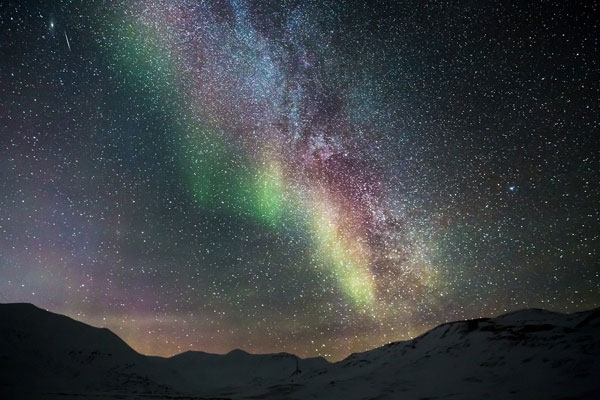Northern Lights captured best this month

[Northern Lights. Photo Credit to Pixabay]
March 2025 is presented to be one of the only opportunities to view the stunning Northern Lights at their peak, a rare phenomenon that displays extraordinary beauty across the night sky.
Also known as the aurora borealis, these colorful strings of light display beauty that captivates viewers worldwide.
The science behind this phenomenon has to do with the sun and how it interacts with the Earth’s magnetic field.
The Northern Lights appear when the particles of the sun collide with the earth’s atmosphere, which is protective enough to not to be harmed while creating the stunning image.
The magnetic field of the earth carries those particles to the North and South poles.
The South pole experiences a similar show, where the lights are named aurora australis.
According to Billy Teets, the director of Dyer Observatory at Vanderbilt University, the interaction between our planet and sun generates solar wind, which triggers the upper atmosphere to produce the aurora.
The green, blue, purple, and pink colors of the Northern Lights are based on the chemical composition of the earth's atmospheric layers.
Different elements in different molecules will exert their own color that binds together to create the beautiful combination.
The common colors red and green produced through the lights are most common because of the presence of nitrogen and oxygen molecules.
According to NASA studies, the month of March has more geomagnetically active days.
This opens up a “prime window” for spotting these lights.
As the peak of the sun’s 11-year cycle—also known as the solar maximum—approaches, the solar activity increases, which can lead to more vibrant colors and improved viewability.
March 20 and September 22 mark the dates of the spring and autumnal equinox.
The Earth's position during those times will allow more interaction with the atmosphere to embolden the geomagnetic storms.
The Northern Lights tend to be brighter around the polar regions, as the solar wind interacts with the magnetosphere to light the auroras.
When the solar activity is at a high, the latitudes of the lights can lower to the south, letting some of the US and Canada experience the auroras.
The best tips for viewing the lights according to the National Oceanic and Atmospheric Administration (NOAA) is the location, darkness, and timing.
When the geomagnetic field is active, the auroras can become visible at locations further away from the poles though they typically appear brightest in polar regions.
The planetary K index (Kp) ranges from 0–9 and measures this geomagnetic activity.
The higher this index ranges, the further the aurora will be away from the poles and the more active and bright the lights will shine.
The location from which the lights are viewed is also a key factor, as going towards the magnetic poles is recommended by experts.
Currently, being able to have a view of the north in the Northern hemisphere or the South in the Southern hemisphere in places such as the top of a hill will give a person a beautiful display.
It is also said that viewing these lights will be most successful at night along with these factors.
One must be far from any source of lights including the full moon that could make the brightness decrease.
The lights are most active between 10 PM and 2AM local time, within two hours of midnight.

- Esther Pi / Grade 9 Session 8
- Round Rock High School

![THE HERALD STUDENT REPORTERS [US]](/assets/images/logo_student_us.png)
![THE HERALD STUDENT REPORTERS [Canada]](/assets/images/logo_student_ca.png)
